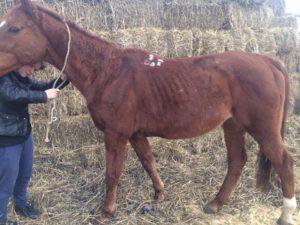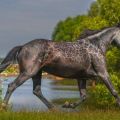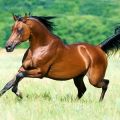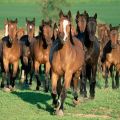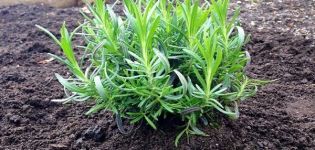How horses are inseminated and their benefits, pregnancy and labor
Horse owners should know the types and characteristics of mating, the criteria for the correct selection of animals. Otherwise, there is a risk of dilution of the purebred breed, a decrease in livestock. The main stage of mating is insemination, which in horses is carried out by three natural methods and artificially. The owner's task is to choose a convenient way of breeding, during the process to control the behavior of animals, then monitor the course of pregnancy.
How do horses breed in the wild?
Natural conditions are a regulator of the number of individuals in the wild herd. Animals mate in spring and until mid-summer. There is a male and up to 12 mares in the herd, of which one is the main one - alpha. It is the alpha female that stallion prefers during the breeding season. The male's role is to protect and cover the females. He is ready to mate year-round, often covers mares without estrus, but in this case, pregnancy does not occur. Copulation can occur several times, which makes the chance of fertilization higher.
Natural uncontrolled reproduction has both pros and cons. Positive aspects of the process:
- naturalness;
- insemination during ovulation;
- the mare is only interested in a strong and healthy stallion, which has a positive effect on the gene pool;
- offspring from birth adapts to living conditions;
- one stallion can fertilize several mares.
Disadvantages of the natural process:
- an inexperienced stallion may move away from the mare during ejaculation, due to which fertilization will not occur;
- there is a high probability of closely related crossing;
- there is practically no way to keep the purebred.
Which is better: free mating or controlled mating?
At horse farms, the process of insemination is controlled by a person, since it is in his interests to maintain purebred, increase the livestock, and improve breed qualities.
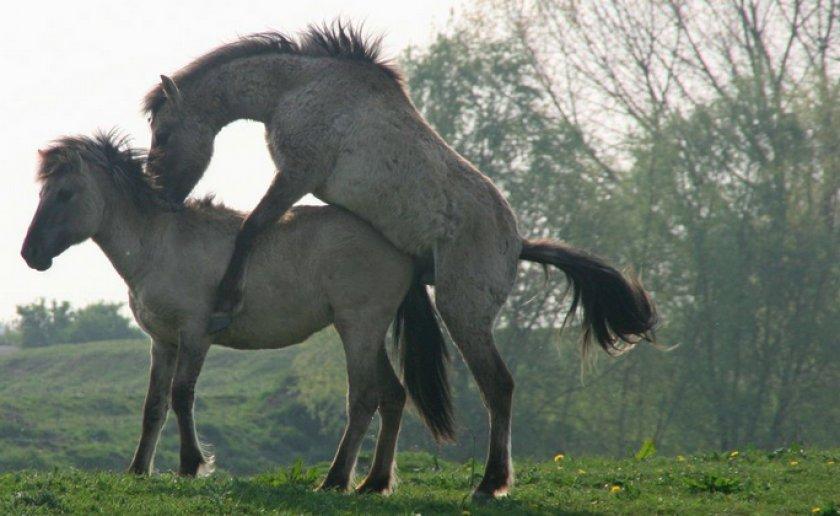
Controlled knitting has several advantages over natural knitting:
- The success rate of insemination is 95%.
- It is possible to preserve and restore the breed.
- The breeding horse can be kept separate from the herd.
- There is an opportunity to improve the breed qualities.
A young stallion can fertilize 20-25 mares, a mature horse twice as many.
Selecting horses for mating
The owner should pay attention to the health of individuals, character, behavioral characteristics, pedigree. It is much more important to choose the best stallion, since the foal takes most of the hereditary characteristics from him, and the characteristics of the mare are less important.
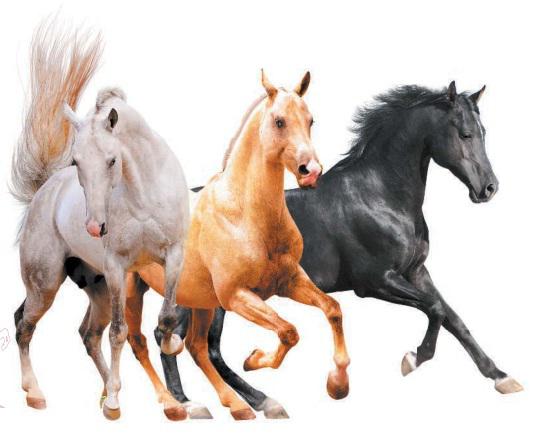
Principle of selection of horses for insemination:
- Individuals must be of approximately the same height, otherwise the coverage will become problematic.
- The stallion must be healthy, robust, free from physical or behavioral defects.
- Both individuals must meet breed standards in appearance and behavior.
- The optimal mare's age for insemination is 3 years. A too young horse should not be allowed to mate, because of the immaturity of the reproductive system, weak and unviable offspring may be born to her. Old mares should not happen either, they have a high probability of developing tumor and cystic formations of the reproductive organs.
- To maintain thoroughbreds, horses of the same breed are selected.
How do you know that a mare has started hunting?
When the hunt begins, the mare's behavior changes. It:
- lifts the tail;
- bows his head;
- slightly spreads the hind legs;
- squeals softly.
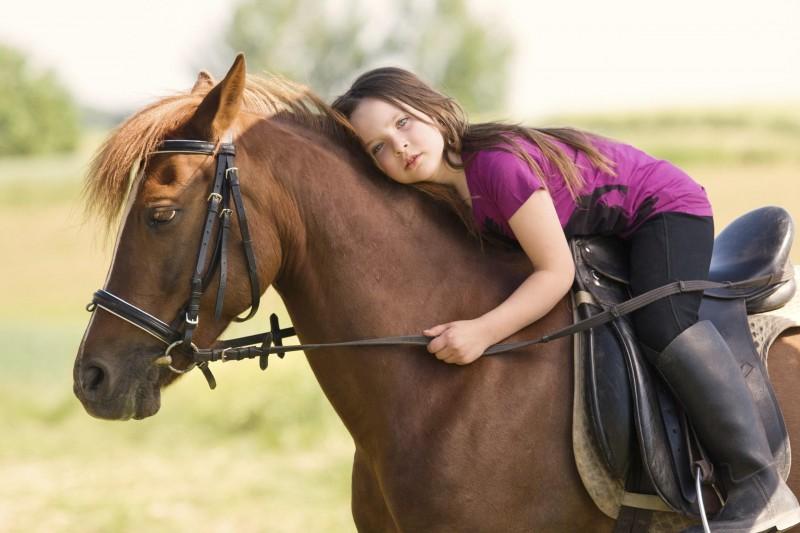
The stallion's girlfriend becomes interested. He sniffs at her, pinches her neck with his teeth. The main sign of estrus is the discharge of a yellowish mucous mass from the vagina. Excessive urination is noted. The vulva swells, its mucous membranes are exposed due to muscle contraction. Mature horses become nervous, irritated, spin around stallions. Young females, on the other hand, become quiet and confused.
When the stallion approaches from behind, the mare stands up as if about to void. Emits small amounts of urine, signaling readiness to mate. Copulation lasts 12-20 seconds.
Hunting lasts 2-3 days. After successful insemination, the mare will no longer admit the stallion.
Horse mating methods
Natural insemination of horses under human control is carried out in three ways:
- The manual method is the most commonly used. Ideal for stalling horses. Insemination is successful in 95% of cases. The stallion and the mare are introduced in a small pen, they are given time to sniff. The horseshoes are removed, the vulva is washed, and the tail is raised. To prevent the stallion from getting injured, use a breeding harness.
- The brewing method is the best option if the horses are kept in herds. The horse is allowed into the herd of 3-7 mares, which is in the corral. The stallion hunts mares, insemination takes place.
- Mowing is another herd insemination method carried out during the mating season. The horses are divided into shoals - groups of one male and 25 females. Insemination is successful in 100% of cases.
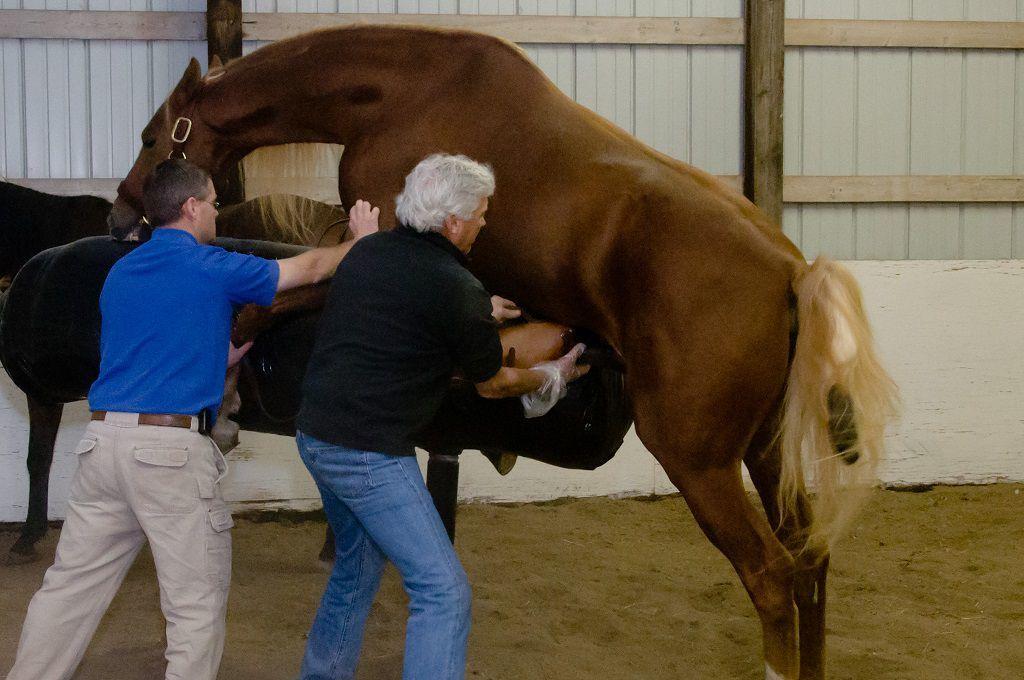
Artificial insemination of mares
In large stud farms, an artificial method of fertilization is often used. The selection of horses is standard.
The advantages of the method:
- high efficiency of insemination (one dose of sperm is enough for insemination of 20 females);
- the possibility of using a sperm bank of the best manufacturers;
- the absence of the likelihood of infection and injury to horses;
- impossibility of exhaustion of the horse-producer.
First, sperm is taken from the breeding horse. The stallion is preliminarily checked for health, the necessary tests are taken. The semen is transported in a freezer box. The introduction of semen into the mare's vagina is carried out by a veterinarian-inseminator. For insemination to take place safely, the horse's legs most often have to be fixed with a special machine.
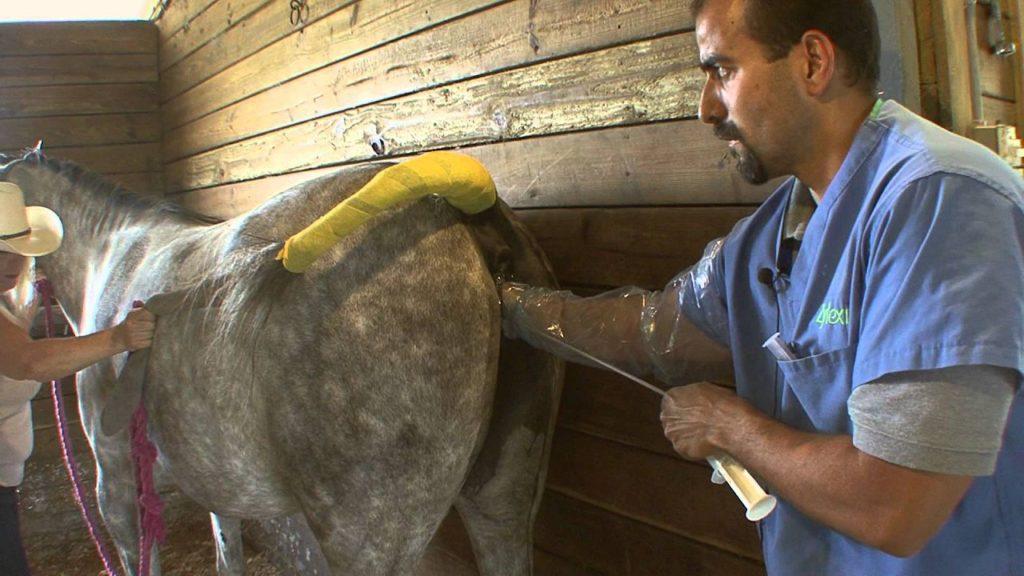
Horse pregnancy and childbirth
Mares carry the fetus for 340 days (plus or minus 2 weeks), which is approximately 11 months. Obvious signs of pregnancy are noted in the later stages. A horse owner can tell if she is pregnant by the following:
- increased or weak appetite;
- lethargy of the horse;
- udder enlargement;
- ignoring the stallion;
- the desire to retire;
- compaction of the abdomen, palpable from the sides.
At a later date, when listening to the abdomen, you can clearly hear how the fetal heart beats.To identify early pregnancy in a horse, it is best for the owner to consult a veterinarian. He uses the following methods:
- rectal or anal examination (successful insemination is recorded by a change in uterine tone);
- Ultrasound (allows you to detect pregnancy already on the 10th day after insemination);
- blood and urine tests for hormones;
- analysis of a vaginal smear.

A pregnant horse can become more aggressive, so all procedures must be done carefully and calmly. The labor process takes about 30 minutes. If there are no complications, then the help of a veterinarian is not needed. The giving birth horse behaves restlessly, usually lies on the bed, but can give birth in a standing position. You do not need to disturb her with your attention, it is enough to stand at a distance to control the process.
The foal is born head first. It happens that the fetus turns forward with its hind legs. Then veterinary help is required. After about 10 minutes, the horse that has given birth rises. This breaks the umbilical cord. If the horse gave birth while standing, the umbilical cord breaks when the foal falls to the ground. If the umbilical cord does not break, then it must be cut off with sterile scissors, tied with a thread.
Postpartum care
After giving birth, the mare and foal must be carefully looked after. For the horse to regain its strength, it needs half an hour's rest. During this time, the owner must wash the parts of the body soiled during childbirth: hind legs, udder, backside, tail. The dirty bedding must be replaced as well.

Immediately after giving birth, the mare will lick the foal, feed it, then only rise to its feet. After about an hour after giving birth, the afterbirth comes out. It will be disposed of immediately. The raised mare is fed and watered. Vaginal discharge in a giving birth horse lasts about a week, so you will have to change the bedding daily.
If 2 hours have passed after childbirth, and the afterbirth has not come out, then you need to immediately call the veterinarian.
The newborn foal is wiped off with a clean towel. Listen to breathing, it should be calm and even. When the mare helps the calf to rise, you need to carefully see if he is limping.
After 2 hours, the foal is already drinking breast milk. If the sucking reflex does not manifest itself, then you will have to express the mare's milk, give the cub to drink from a bottle. Meconium in a foal should come out 2-3 hours after giving birth. If this does not happen, you need to provoke a bowel movement by inserting a finger into the anus or by giving the baby a large spoonful of castor oil to drink. A newborn foal must not be separated from its mother.

